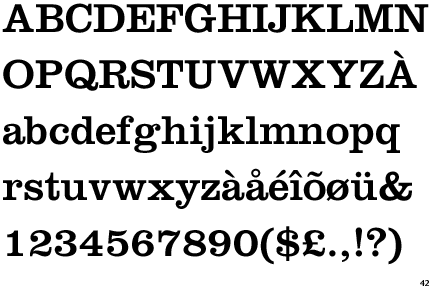
- Clarendon was first introduced by Robert Besley in 1845 who went on to become the Mayor of London, and was revisited a century later by Eduoard Hoffmann and Hermann Eidenbenz.
- The origin of its name is not entirely certain, some attribute it to the Clarendon Press at Oxford University but the connection is not logical as there wasn't a type foundry at Oxford University Press at the time of Clarendon's creation.




- Clarendon was patented and was the first registered typeface, but after the three year patent ran out duplications and copies were made.
- The Clarendon was first used as a display face for posters. It was popular before the first World War in Germany and was used for proclamations as well as in the West for wanted posters. It was also popularly used in advertisement during the Industrial Revolution.

- Clarendon was also very popular among newspapers during the 1920's because it faired well in comparison to the other type sets which because of the increase in speed and amount of production through technological development wore down quicker. The Clarendon was ideal for the developing print processes.
- Clarendon also introduced and popularized bolding as a means of highlighting important parts of texts rather than the previously adopted italics.

- The Claredon is a contemporary remake of the slab serif typeface. Slab serifs are characterized by rectangular blocky serifs that can be blunt, rounded or angular.
- The difference between Clarendon and many other slab serif fonts is that there is a bracket rather than a 90 degree angle connecting the joints and the serifs are thinner than the letter.

- Following the second World War, Clarendon like many other fonts experienced exponential growth through advertisement production as the war had brought about economic strength.

The beauty of the Clarendon text is the easy legibility and the delightful and almost playful curves and weight given to the letters.